The Sense HAT: headgear for the terminally curious
Having looked at the chunky outside goodness of the Astro Pi case yesterday it seems only fair to take another look at the heart of the Astro Pi, the Sense HAT. (This is not a conical cap that you put on the really clever kid and stand him in the corner but our add-on board for the Pi bristling with sensors and other useful things.) It’s currently going out to schools and organisations who took part in our recent competition but we also plan to sell it.
The full tech specs are here but basically it has:
- 8×8 LED matrix display
- accelerometer, gyroscope and magnetometer
- air pressure sensor
- temperature and humidity sensor
- a teeny joystick
The Astro Pi site explains what these all do and how they could be used.
I’m really excited about the Sense HAT. With all of those sensors on a single board it’s obviously a brilliant tool for making stuff (I have in mind a self-balancing attack robot that senses humans, aggressively hunts them down and then gently dispenses Wagon Wheels from its slot-like mouth). But it’s the potential for science that’s making me think. In particular I’d love to see it flourish in the science classroom.
Despite the teacher recruitment ads that inevitably show zany antics with Van de Graaff generators, explosions and dancing bonobos the reality is that much of high school science is about experimentation and observation (which is a good thing!). But lab kit such as sensors, controllers and data loggers don’t come cheap (I was once told by a class that their usual science teacher never let them use the data loggers because “they were too expensive). Nor is it easy to get bits of kit to talk to each other or the Internet of Things (with the potential benefits that come from that such as improved assessment, parental involvement, sharing and consolidating data).
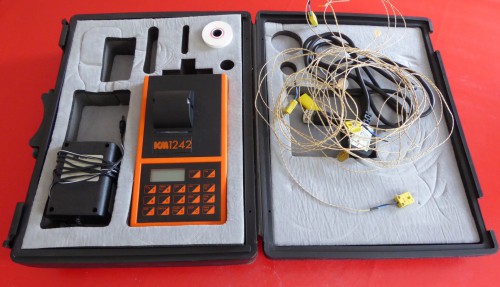
A data logger I found in a school skip. The size of a cash register yet only logs temperature. On paper.
A Pi wearing a Sense HAT could do everything from monitoring plant growth to controlling and logging experimental variables. A series of experiments using the accelerometer/gyroscope to investigate forces and equations of motion is mandatory. Feel free to add your own ideas below and if any science teachers would like to get involved the please get in touch.
If you are lucky enough to already have a Sense HAT, Martin “When does that man sleep?” O’Hanlon has written an excellent getting started tutorial . If not then it’s worth taking a look anyway to get a sense (yeah, yeah :)) of what it can do.
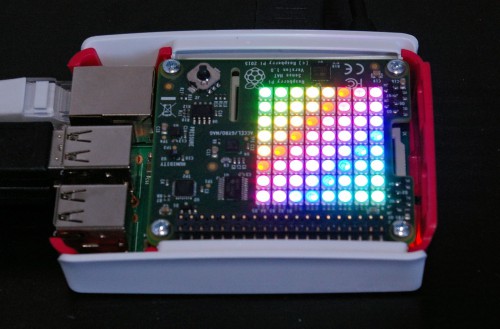
Up above the streets and the houses, Sense HAT climbing high. (Photo: Martin O’Hanlon @martinohanlon)
The final price is yet to be announced but we’re confident that there will be nothing else out there to rival it for value, potential, support and resources. Keep your eyes peeled for more news on the Sense HAT soon.

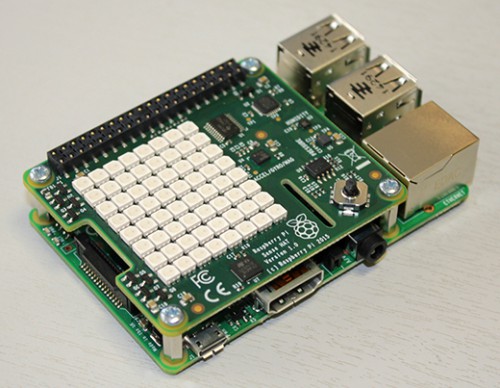
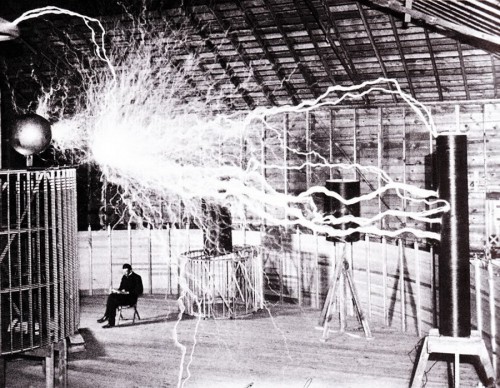




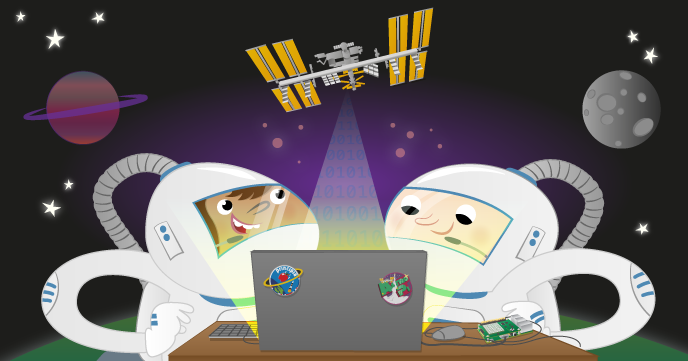

34 comments
Martin O’Hanlon
It really is a brilliant piece of hardware. Thanks for the link to my tutorial.
btw – it took ages to get a decent picture of the led matrix.
Clive Beale — post author
“btw – it took ages to get a decent picture of the led matrix.”
that’s why I borrowed yours – cheers! :)
MLG person
Fedora HAT?
*puts on fedora*
Vasi
I can only see how awesome this is when I imagine how my life would have been changed if we’d have this when we were in school, back when every bit of gear was a treasure.
But, for science, data logging, processing and visualization, wouldn’t a screen be much better than a colour LED array?
Clive Beale — post author
It was designed for use on the ISS hence no screen. Also, would be more expensive and for data logging, monitoring and control etc you’re probably going to be running it headless.
gordon77
“It was designed for use on the ISS hence no screen”
Could you explain why the ISS can’t have a screen.
jdb
Interoperability and resourcing. Crew and equipment time is scheduled down to the hour for the entirety of a 6-month mission – with educational payloads flown previously there traditionally was zero allocation for hardware (everything had to be self-contained) and a scant minimum for crew time.
The less equipment we require as our mission baseline, the more likely it is that we will get allocation among the myriad of science experiments the crew have planned as part of their long stint on the ISS. Tim can’t be fiddling about with HDMI cables in mission prime time!
The Astro-Pi mission is also on a tight timescale until launch, compared to other payloads flown to the ISS. The fewer the number of potential snags, the better.
Vas
I should have been more concise, I meant a small OLED screen or something, on the board, instead of the LED array. Perhaps the OLED or LCD screens would have been much more difficult to harden for the tough conditions it needs to withstand.
Clive Beale — post author
Personally I’m happy that’s how it is. For me, the 8×8 matrix is a learning opportunity: everything from a maths lesson on coordinates to learning Python lists (of lists) by designing emojis.
Misel
Well, you can always attach a screen with HDMI.
But with and array of RGB-LEDs students will actually learn how to program the screen themselves. After all every screen consists of millions of RGB pixels. :)
Michael Horne
The SenseHAT is just cool. That’s its trump card. :-)
John
Really nice hat! How much power does it consume?
James Hughes
1.21 gigawatts of electricity. Just make sure you are not going 88mph when you turn it on.
jdb
Each LED is driven with approximately 0.95mA of current when active (we tried 2mA, but that just tipped the balance into the “my eyes now hurt” category). Each row is driven with equal duty cycle and the frame has a blanking period that is dependent on how much out-of-band processing the Atmel MCU does.
Average it out, and at full brightness with sensors a-sensing you’re looking at ~40mA with everything active.
Ryan Osborn
I was under the impression that the RTC had been removed from the Sense HAT and had instead been moved on to a separate RTC board due to physical space constraints? (https://www.raspberrypi.org/forums/viewtopic.php?f=104&t=103385). Is this still the case, or have you managed to squeeze it on to the Sense HAT now?
Clive Beale — post author
Good spot, thanks – C & P from old content I did a while back:) The RTC will not feature on the SenseHAT and will only be used in the Astro Pis themselves (on a separate board as you say).
Now fixed.
Misel
I really can’t wait to buy this thing and toy around with actual space hardware :)
elParaguayo
Looks good for a quick game of Snake (why else would you need a joystick?)
Alberto
Tears are falling down, with emotion. You can’t imagine how this is going to get into every physics labs.
Mark Daniels
Sorry to be a pedant here, Clive . . . but that photo is not of a Van de Graaff (correct spelling) generator. It is actually a very famous photo of Nikola Tesla sitting inside the primary winding of a very large Tesla coil.
Other than that, this looks good.
Clive Beale — post author
It’s not a real school classroom either :) It’s a multiple exposure photo of Tesla in his Colorado Springs experimental station. I chose it because it’s one of my favourite Tesla photos and I’d just finished re-reading one of his biographies (‘The Man Who Invented the Twentieth Century’). I believe it might actually be the largest Tesla coil ever built. We’re big Tesla fans here at Pi Towers, we even have this print http://theoatmeal.com/blog/merch_nov_2012 :) (courtesy of @bennuttall)
(P.S. You may notice in my blogs that many of my photo captions do not actually relate to the photo itself. Or reality. :D But I removed the spare ‘r’, thanks. ;))
Homer L. Hazel
I can hardly wait until these are available for the general public. All of these wonderful things for teachers makes me regret that I retired from teaching (at the Junior College Level) about 5 years back. So many neat things to buy that are not yet available to the general public!
Oh and keep up the great work!
MP
I hope it could add additionnal hardware TTL serial ports for enabling interfacing with other equipments…
I understand this is not the main point of raspberry pi fondation, but I think that the lack of hardware TTL serial ports is a blocker for a lot of industrial applications for the pi… if this could be heard that would be great !
Clive Beale — post author
The compute module was made for just this reason! For small-scale specialist projects it’s a case of roll-your-own (I just made a custom cable to talk to a Brother knitting machine for a few quid).
ColinD
I’m amazed that that many sensors can be squeezed into such a small package. When I was at Uni (mid-90s) studying Environmental Science I remember for my dissertation cycling up to the moors to take water samples with a backpack full of equipment. Each sensor package was the size of a large lunch box and sampled one thing: dissolved oxygen, Ph, conductivity (I vaguely recall) and temperature (and probably some things I’ve forgotten). Data was displayed via analogue swingy needle dial things and noted into my waterproof notebook. It was a big backpack.
I also remember putting a pondnet in my rucksack so the net end poked out of the top. I then cycled under a roadsign and it caught… flat on back on ground.
I dream of being able to do this kind of data collection thing with a single box of tricks. Think I’ll have to make something with the Pi to do this for me.
BTW if anyone’s interested in freshwater data collection and statistical analysis I can heartedly recommend Biology of Freshwater Pollution by CF Mason. New editions cost a fortune, but older editions turn up cheap on eBay. Best book I’ve ever bought (still have mine from Uni ~20 years later).
Yvan T.
Are we getting closer and closer to a fully functional tricorder?
Now that the size of sensors are shrinking :)
Winchell Chung
Yes, my first thought was that this board will convert your Raspberry Pi into a Star Trek tricorder.
Which would be an interesting way for the teacher to introduce the board to their students.
Neil
It might have been about the time Tesla shut down Colorado Springs Power.
neil johnskn
Working as a physics teacher this could change my life.
Finally being able to hand over real sensors to multiple kids. Not one sensor for the whole class.
Forces on roller coasters screams out to me, as does impacts/collisions, pendulums. I think it could genuinely help students break down common misconceptions, and they can do it themselves.
Time to google raspberrrypi portable power…
Can’t wait to see what other people come up with too!
Roger Gammans
It’s quite easy to power a PI from a battery. You only need 5v after all.
Battery are easily available in voltages above 7v, which then just add a regulator or even prebuilt Dc/Dc converters. I admit I havent tried a simple regulator – but have done so with cheap 12-5v DC/DC converters off ebay.
I love the idea of Pi on a cart on a loop-loop track running a an accelerator data logger. If you have enough power budget I wonder whether a wifi dongle will get you data out in near real time too.
For myself I’d have liked to seen an ADC on that HAT – so other sensors can be easily interfaced.
daveg
Nice looking bit of kit.
Slightly off topic now; who makes the Pi case in the above photo with the rainbow on the matrix display?.
I cant seem to find it on the usual Pi outlets so haven’t been able to work out who makes it or where to find one.
Gary Bushey
Is there any place to get more technical documentation about this? I want to get it to work with my Win10 Raspberry Pi devices but to do that I need information like the byte address to use for it and its various sensors. I’ve looked through the Python code but could not see anything like this information in it.
Thanks.
Mattias Larsson
Hi Gary!
I have a solution for you at https://www.hackster.io/laserbrain/windows-iot-sense-hat
Hope it is of some help! :-)
/Mattias
Isra
Hi,
I just got my sense HAT, and looks awesome! I will start developing jaw dropping apps ASAP!
Just one question? I will need to add GPS positioning… how would you advice to do it?
Thanks!